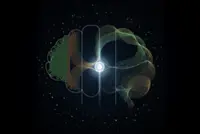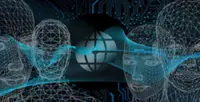As AI becomes a bigger part of our lives, the ability to spot AI images – and answer questions like these – is becoming more and more important. — Pixabay
Is that celebrity really endorsing that product or is the ad an AI scam? Should you reconsider your vote based on that politician’s photograph or is the image just AI-generated propaganda? Is your jealousy of that influencer’s home or vacation because of their flawless taste or facility with AI image manipulation?
As AI becomes a bigger part of our lives, the ability to spot AI images – and answer questions like these – is becoming more and more important.
Unfortunately, the latest science suggests it’s one skill that most of us are still pretty terrible at. Helpfully, though, science also offers a few tricks that can greatly improve your ability to tell AI fabrications from real-life images.
How good are people at spotting AI images?
Matthew Groh, a management professor at Northwestern University’s Kellogg School of Management, has been studying deepfakes for years. But like the rest of us, he’s seen how AI has supercharged the problem by vastly improving both the quality and quantity of fakes out there.
Just how big of a problem is this, he wanted to know. Are everyday people usually able to tell fact from robot-created fiction? To find out, he and a team of collaborators designed a massive study, recruiting about 50,000 volunteers and testing their ability to discern AI-generated images from real ones.
How did his volunteers do? The good news is they were more accurate than just flipping a coin. The bad news is not by that much. Participants correctly identified AI-generated images 76% of the time and real photographs 74% of the time.
“That’s very much in line with what other experiments have found,” Groh told KelloggInsight. “It’s halfway between random guessing and perfect identification.”
The neuroscience of why you’re bad at spotting AI images
That leaves a lot of room for improvement. Which comes as no surprise to cognitive psychologist Arryn Robbins. On The Conversation recently, she explained the evolutionary basis for our struggles to spot AI images.
“Spotting errors in AI images requires noticing small details, but the human visual system isn’t wired for that,” she writes. “Human perceptual systems evolved to quickly assess environments for any threats to survival, with sensitivity to sudden changes – such as a quick-moving predator – sacrificing precision for speed of detection.”
In short, you can blame your hunter-gatherer ancestors for your tendency to effectively scan for the gist of an image and miss that one person in the photo who has three legs. That ability kept early humans from becoming lunch (or starving from the lack of one), but it’s not great for accurately spotting AI fakes today.
Science-backed tips to get better at spotting AI fakes
All of which is just scientific confirmation of what many entrepreneurs probably suspected. Humans are not great at identifying when an image is AI-generated. That should encourage us all to be a little more careful. But is there a more practical takeaway from this research?
Actually, yes. The experts insist that, while your brain might not naturally excel at the sort of detailed observation required to spot AI fakes, a few simple tricks can make you much better at it.
– Slow down. People only identified AI images about 75% of the time under normal circumstances. But they do a lot better if they remind themselves to look a little longer. Just devoting 10 seconds to looking at an image causes that success rate to jump to 80%. “That’s a big jump in accuracy,” Groh commented.
– Know the most common AI flaws. Groh and his team also found that when people are explicitly told about common flaws in AI images, they get better at spotting them. In brief they are: weird anatomy (a sixth finger or strangely long neck), overstylisation (waxy skin, absurd levels of perfection), functional issues (a rigid slice of pizza, wildly misspelled signage), violations of the laws of physics (a mirror reflecting something different from what’s in front of it), or cultural implausibilities (diversity in historical contexts when there is little chance it would exist).
– Check the source. This step might not be worth your effort in low-stakes situations (go ahead and enjoy that AI-improved design inspo), but when spotting a fake matters, “reverse image search can help trace a picture’s origin,” suggests Robbins. “If the metadata is missing, it might be generated by AI.”
Humility rules (again)
These tricks can make you modestly better at spotting. The most important takeaway from this research, however, might just be to remember you’ll probably never be great at it. Especially if you’re just casually scanning. That’s just not how human brains work.
The biggest lesson of all is the value of a little humility. (Yes, I’m on my favourite hobbyhorse once again.)
Knowing that you, too, are susceptible to AI fakery should cause you to slow down, evaluate images more carefully, and double check anything important. You’ll still get fooled sometimes. But thanks to steps like these you should be able to spot AI images far more often. – Inc./Tribune News Service





